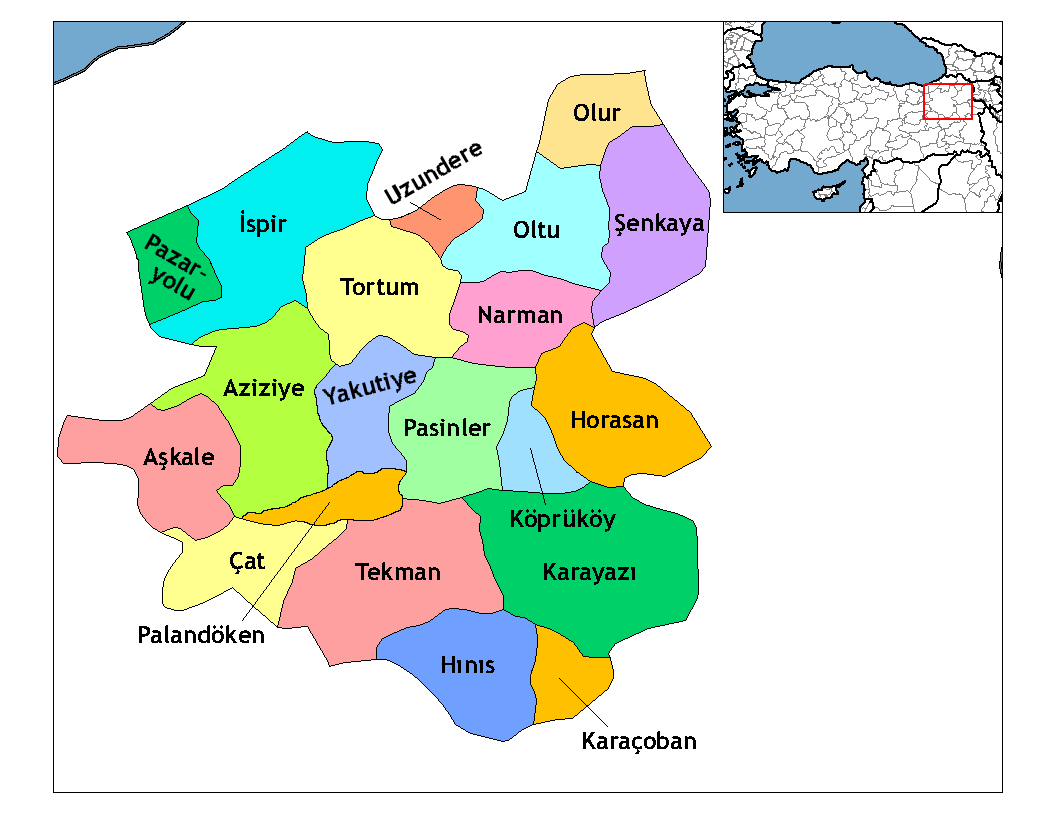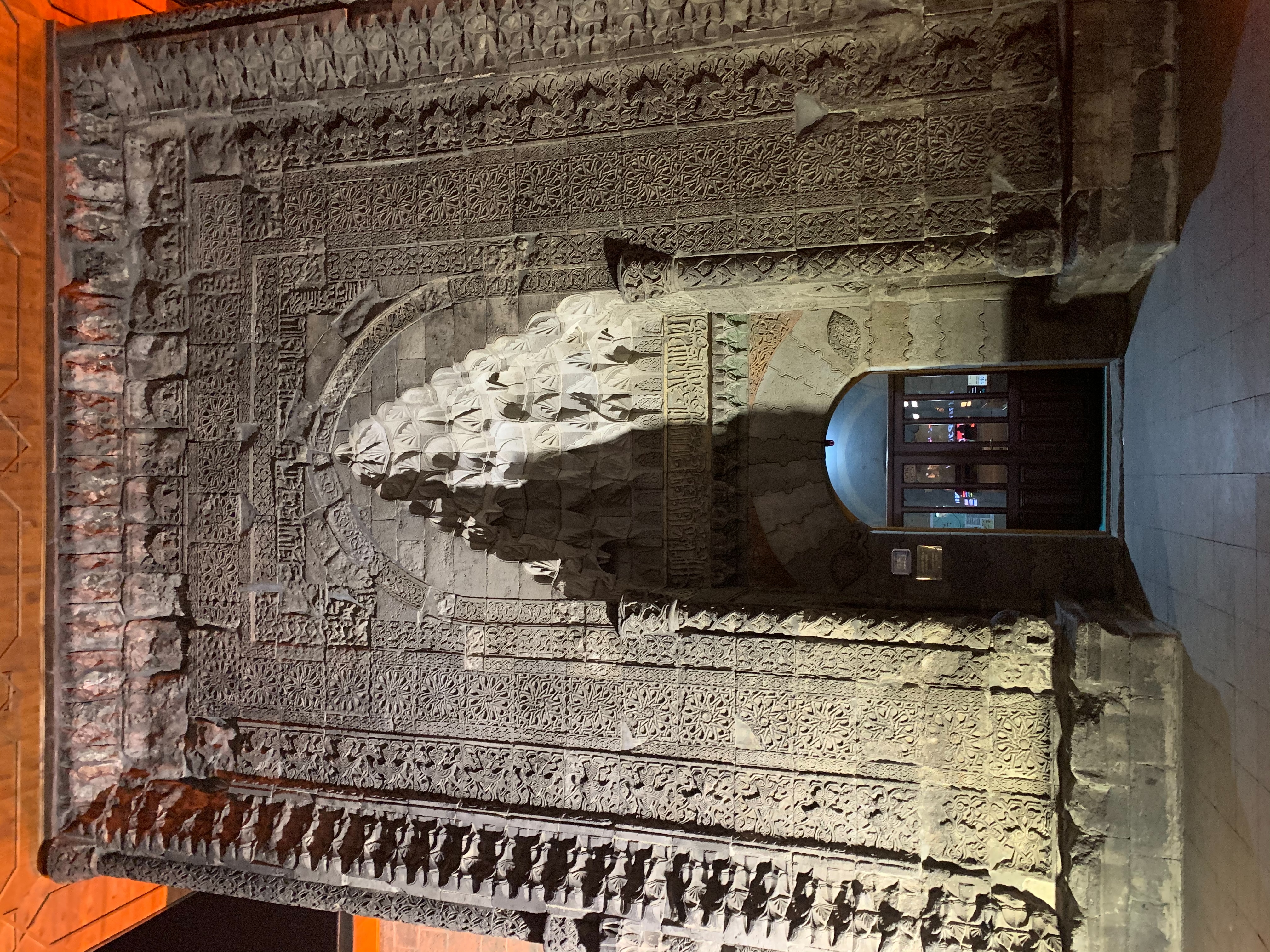|
Karin (historic Armenia)
Karin (or Garin) was a region of historic Armenia, roughly encompassing parts of the Erzurum and Muş Provinces in present-day Turkey. Karin (Erzurum) was founded by Armenians who migrated from eastern areas. Greeks, who called this city Karano, formed a significant percentage of the population. When Romans came, Armenians gave the city to Emperor Theodosios II as a gift. Later, the city was occupied by Arabs (Arz-ı Rum) (Land of the Rum). Georgians called the city Karnu-kalaki. The city is an Eastern – Black Sea city of Turkey. History In 1071, Seljuk Turks took possession of the city and carried out severe massacres of its population. Greek chronicler John Skylitzes reported that during the seizure of Erzurum, the Seljuk Turks killed 140 thousand people. Although this number is probably inflated, it reflects the heavy consequences of the Seljuk Turk siege on the local Armenian and Greek communities. In later years, a 15th-century Spanish historian described Erzurum Er ... [...More Info...] [...Related Items...] OR: [Wikipedia] [Google] [Baidu] [Amazon] |
Kingdom Of Armenia (antiquity)
The Kingdom of Greater Armenia or simply Greater Armenia or Armenia Major ( '; ), sometimes referred to as the Armenian Empire under Tigranes the Great, Tigranes II, was an Armenians, Armenian kingdom in the Ancient Near East which existed from 331 BC to 428 AD. Its history is divided into the successive reigns of three Royal family, royal dynasties: Orontid dynasty, Orontid (331–200 BC), Artaxiad dynasty, Artaxiad (189 BC12 AD), and Arsacid dynasty of Armenia, Arsacid (52–428). The root of the kingdom lies in the Satrapy of Armenia of the Achaemenid Empire of Iran, which was formed from the territory of Urartu (860–590 BC) after it was conquered by the Medes in 590 BC. The satrapy became a kingdom in 321 BC during the reign of the Orontid dynasty after the conquest of Persia by Alexander the Great, which was then incorporated as one of the Hellenistic period, Hellenistic kingdoms of the Seleucid Empire. Under the Seleucid Empire ( ... [...More Info...] [...Related Items...] OR: [Wikipedia] [Google] [Baidu] [Amazon] |
Erzurum Province
Erzurum Province () is a province and metropolitan municipality in the Eastern Anatolia Region of Turkey. Its area is 25,006 km2, and its population is 749,754 (2022). The capital of the province is the city of Erzurum. It is the fourth largest province in all of Turkey. It is bordered by the provinces of Kars and Ağrı to the east, Muş and Bingöl to the south, Erzincan and Bayburt to the west, Rize and Artvin to the north and Ardahan to the northeast. The governor of the province is Mustafa Çiftçi, appointed in August 2023. The province has a Turkish majority. Geography The surface area of the province of Erzurum is the fourth biggest in Turkey. The majority of the province is elevated. Most plateaus are about above sea level, and the mountainous regions beyond the plateaus are and higher. Depression plains are located between the mountains and plateaus. The southern mountain ranges include the Palandöken Mountains (highest peak Büyük Ejder high) and t ... [...More Info...] [...Related Items...] OR: [Wikipedia] [Google] [Baidu] [Amazon] |
Muş Province
Muş Province (; ; ) is a Provinces of Turkey, province in the east Anatolia region of Turkey (Türkiye). Its area is 8,718 km2, and its population is 399,202 (2022), down from 453,654 in 2000. The provincial capital is the city of Muş. Another town in Muş province, Malazgirt (''Manzikert''), is famous for the Battle of Manzikert of 1071. History The province is considered a part of historical Western Armenia. Before the Armenian genocide, the area was a part of the six vilayets, Six Armenian Vilayets. The province is considered part of Turkish Kurdistan and has a Kurds, Kurdish majority. Avni Çakır was appointed Governor of Muş, Governor of the province in August 2023. Geology and geomorphology There are a total of 8 mountain ranges, 4 of which are large, in the province. Muş province is surrounded by Otluk Mountains in the middle, Akdoğan Mountains in the north, Bingöl Mountains in the northwest, Şerafettin Mountains in the west, Karaçavuş Mountains in the s ... [...More Info...] [...Related Items...] OR: [Wikipedia] [Google] [Baidu] [Amazon] |
Turkey
Turkey, officially the Republic of Türkiye, is a country mainly located in Anatolia in West Asia, with a relatively small part called East Thrace in Southeast Europe. It borders the Black Sea to the north; Georgia (country), Georgia, Armenia, Azerbaijan, and Iran to the east; Iraq, Syria, and the Mediterranean Sea to the south; and the Aegean Sea, Greece, and Bulgaria to the west. Turkey is home to over 85 million people; most are ethnic Turkish people, Turks, while ethnic Kurds in Turkey, Kurds are the Minorities in Turkey, largest ethnic minority. Officially Secularism in Turkey, a secular state, Turkey has Islam in Turkey, a Muslim-majority population. Ankara is Turkey's capital and second-largest city. Istanbul is its largest city and economic center. Other major cities include İzmir, Bursa, and Antalya. First inhabited by modern humans during the Late Paleolithic, present-day Turkey was home to List of ancient peoples of Anatolia, various ancient peoples. The Hattians ... [...More Info...] [...Related Items...] OR: [Wikipedia] [Google] [Baidu] [Amazon] |
Theodosios II
Theodosius II ( ; 10 April 401 – 28 July 450), called "the Calligrapher", was Roman emperor from 402 to 450. He was proclaimed ''Augustus'' as an infant and ruled as the Eastern Empire's sole emperor after the death of his father Arcadius in 408. His reign was marked by the promulgation of the Theodosian law code and the construction of the Theodosian Walls of Constantinople. He also presided over the outbreak of two great Christological controversies, Nestorianism and Eutychianism. Early life Theodosius was born on 10 April 401 as the only son of Emperor Arcadius and his wife Aelia Eudoxia.'' PLRE'' 2, p. 1100 On 10 January 402, at the age of 9 months, he was proclaimed co-''augustus'' by his father, thus becoming the youngest to bear the imperial title up to that point. On 1 May 408, his father died and the seven-year-old boy became the sole emperor of the Eastern half of the Roman Empire. Reign Early reign The government was at first administered by the praet ... [...More Info...] [...Related Items...] OR: [Wikipedia] [Google] [Baidu] [Amazon] |
Seljuk Dynasty
The Seljuk dynasty, or Seljukids ( ; , ''Saljuqian'',) alternatively spelled as Saljuqids or Seljuk Turks, was an Oghuz Turkic, Sunni Muslim dynasty that gradually became Persianate and contributed to Turco-Persian culture. The founder of the Seljuk dynasty, Seljuk Beg, was a descendant of a royal Khazar chief Tuqaq who served as advisor to the King of the Khazars. in West Asia and Central Asia. The Seljuks established the Seljuk Empire (1037–1194), the Sultanate of Kermân (1041–1186) and the Sultanate of Rum (1074–1308), which stretched from Iran to Anatolia and were the prime targets of the First Crusade. Early history The Seljuks originated from the Kinik branch of the Oghuz Turks, who in the 8th century lived on the periphery of the Muslim world; north of the Caspian Sea and Aral Sea in their Oghuz Yabgu State in the Kazakh Steppe of Turkestan. During the 10th century, Oghuz had come into close contact with Muslim cities. When Seljuk, the leader of the S ... [...More Info...] [...Related Items...] OR: [Wikipedia] [Google] [Baidu] [Amazon] |
Seljuk Empire
The Seljuk Empire, or the Great Seljuk Empire, was a High Middle Ages, high medieval, culturally Turco-Persian tradition, Turco-Persian, Sunni Islam, Sunni Muslim empire, established and ruled by the Qiniq (tribe), Qïnïq branch of Oghuz Turks. The empire spanned a total area of from Anatolia and the Levant in the west to the Hindu Kush in the east, and from Central Asia in the north to the Persian Gulf in the south, and it spanned the time period 1037–1308, though Seljuk rule beyond the Anatolian peninsula ended in 1194. The Seljuk Empire was founded in 1037 by Tughril (990–1063) and his brother Chaghri Beg, Chaghri (989–1060), both of whom co-ruled over its territories; there are indications that the Seljuk leadership otherwise functioned as a triumvirate and thus included Seljuk dynasty, Musa Yabghu, the uncle of the aforementioned two. During the formative phase of the empire, the Seljuks first advanced from their original homelands near the Aral Sea into Greater Kho ... [...More Info...] [...Related Items...] OR: [Wikipedia] [Google] [Baidu] [Amazon] |
Erzurum
Erzurum (; ) is a List of cities in Turkey, city in eastern Anatolia, Turkey. It is the largest city and capital of Erzurum Province and is 1,900 meters (6,233 feet) above sea level. Erzurum had a population of 367,250 in 2010. It is the site of ancient Theodosiopolis. The city uses the double-headed eagle as its coat-of-arms, a motif that has been a common symbol throughout Anatolia since the Bronze Age. Erzurum has winter sports facilities, hosted the 2011 Winter Universiade, and the 2023 Winter Deaflympics (in March 2024). Name and etymology The city was originally known in Armenian language, Armenian as Karno K'aghak' (), meaning city of Karin, to distinguish it from the district of Karin (wikt:Կարին, Կարին). It is presumed its name was derived from a local tribe called the Karenitis. Darbinian, M. "Erzurum," Armenian Soviet Encyclopedia. Yerevan: Armenian Academy of Sciences, 1978, vol. 4, p. 93. An alternate theory contends that a local princely family, the Kams ... [...More Info...] [...Related Items...] OR: [Wikipedia] [Google] [Baidu] [Amazon] |
Russo-Turkish War (1877–1878)
The Russo-Turkish War (1877–1878) was a conflict between the Ottoman Empire and a coalition led by the Russian Empire which included United Principalities of Moldavia and Wallachia, Romania, Principality of Serbia, Serbia, and Principality of Montenegro, Montenegro. Precipitating factors included the Russian goals of recovering territorial losses endured during the Crimean War of 1853–1856, re-establishing itself in the Black Sea and supporting the political movement attempting to free Balkan nations from the Ottoman Empire. The Romanian army had around 114,000 soldiers in the war. In Romania the war is called the Russo-Romanian-Turkish War (1877–1878) or the Romanian War of Independence, Romanian War of Independence (1877–1878). The Russian-led coalition won the war, pushing the Ottomans back all the way to the gates of Constantinople, leading to the intervention of the Western European great powers. As a result, Russia succeeded in claiming provinces in the Caucasus, n ... [...More Info...] [...Related Items...] OR: [Wikipedia] [Google] [Baidu] [Amazon] |
Erzurum Congress
Erzurum Congress () was an assembly of Turkish Revolutionaries held from 23 July to 4 August 1919 in the city of Erzurum, in eastern Turkey, in accordance with the previously issued Amasya Circular. The congress united delegates from six eastern provinces (vilayets) of the Ottoman Empire, many parts of which were under Allied occupation at the time. Background Mudros Armistice In the months leading up to the end of World War I, the Ottoman regime had undergone major restructuring. The government ministers of the Committee of Union and Progress, which ran the Ottoman government between 1913 and 1918, had resigned from office and fled the country soon afterwards. Successful Allied offensives in Salonika posed a direct threat to the Ottoman capital of Constantinople. Mehmed VI appointed Ahmed Izzet Pasha to the position of Grand Vizier and tasked him with the assignment of seeking an armistice with the Allied Powers and ending Ottoman involvement in the war. On 30 October 1918, ... [...More Info...] [...Related Items...] OR: [Wikipedia] [Google] [Baidu] [Amazon] |



